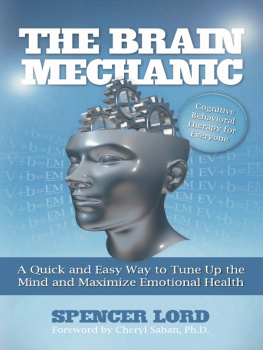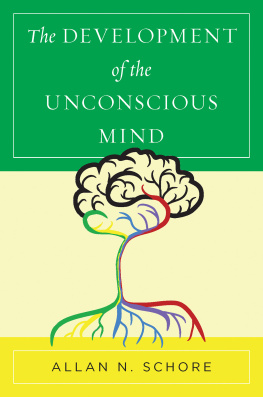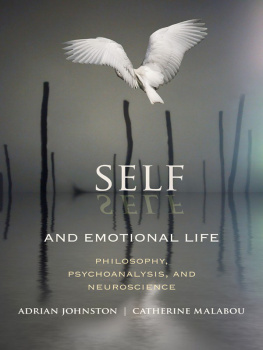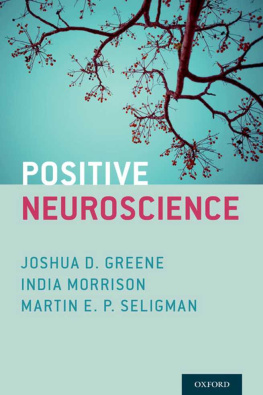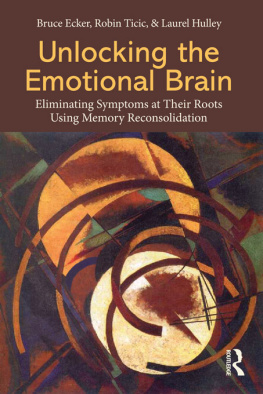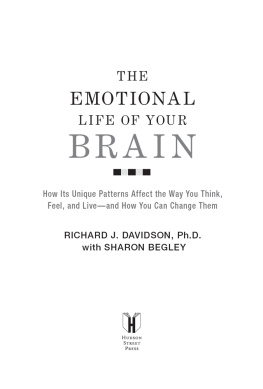The Archaeology
of Mind
The Norton Series on Interpersonal Neurobiology
Allan N. Schore, PhD, Series Editor
Daniel J. Siegel, MD, Founding Editor
The field of mental health is in a tremendously exciting period of growth and conceptual reorganization. Independent findings from a variety of scientific endeavors are converging in an interdisciplinary view of the mind and mental well-being. An interpersonal neurobiology of human development enables us to understand that the structure and function of the mind and brain are shaped by experiences, especially those involving emotional relationships.
The Norton Series on Interpersonal Neurobiology will provide cutting-edge, multidisciplinary views that further our understanding of the complex neurobiology of the human mind. By drawing on a wide range of traditionally independent fields of researchsuch as neurobiology, genetics, memory, attachment, complex systems, anthropology, and evolutionary psychologythese texts will offer mental health professionals a review and synthesis of scientific findings often inaccessible to clinicians. These books aim to advance our understanding of human experience by finding the unity of knowledge, or consilience, that emerges with the translation of findings from numerous domains of study into a common language and conceptual framework. The series will integrate the best of modern science with the healing art of psychotherapy.
A NORTON PROFESSIONAL BOOK
The Archaeology
of Mind
Neuroevolutionary Origins of
Human Emotions
Jaak Panksepp
Lucy Biven
Foreword by Daniel J. Siegel

Copyright 2012 by Jaak Panksepp and Lucy Biven
All rights reserved
First Edition
For information about permission to reproduce selections from this book, write to Permissions, W. W. Norton & Company, Inc., 500 Fifth Avenue, New York, NY 10110
For information about special discounts for bulk purchases, please contact W. W. Norton Special Sales at or 800-233-4830
Book design by MidAtlantic Publishing Services
Production manager: Leeann Graham
Library of Congress Cataloging-in-Publication Data
Panksepp, Jaak, 1943
The archaeology of mind : neuroevolutionary origins of human emotions / Jaak Panksepp, Lucy Biven. -- 1st ed.
p. cm. -- (A Norton professional book) (The Norton series on interpersonal neurobiology)
Includes bibliographical references and index.
ISBN 978-0-393-70531-7 (hardcover)
1. Emotions. 2. Emotions and cognition. 3. Memory. I. Biven, Lucy. II. Title.
BF531.P36 2012
152.4--dc23
2012010323s
ISBN: 978-0-393-70531-7
EISBN: 978-0-393-70731-1
W. W. Norton & Company, Inc., 500 Fifth Avenue, New York, N.Y. 10110
www.wwnorton.com
W. W. Norton & Company Ltd., Castle House, 75/76 Wells Street, London W1T 3QT
1 2 3 4 5 6 7 8 9 0
We must remember that subcortical neurons in emotional regions typically fire much more slowly than in higher sensory-perceptual regions of the thalamus and neocortex. In many systems, the clustering of neural firing as opposed to their higher patterned rates is more important. Often the power and sustained actions of certain affective-visceral neurochemicals (e.g., neuropeptides) is more important in the patterning of emotional feelings and responses than elevations of neural firing rates, and the resulting increases in blood flow, which techniques such as PET and fMRI monitor. Thus, these techniques are not as sensitive to lower-affective brain functions as to higher-cognitive ones, which yields an undesirable bias in the way these techniques are being used to study emotions: They are more sensitive to the accompanying cognitive-thoughtful correlates of emotions than the affective substrates.
The current era of brain imaging, although based on much more accurate brain activity measures (blood flow and metabolic changes), is still yielding images of brain functions that do not accurately reflect the underlying brain activities that generate mental events. They simply give us a more accurate estimate of which brain areas may be most important to investigate in order to tell us how the Mind-Brain is organized. As most practitioners know, this new phrenology still has many challenges to face and troublesome flaws in any attempt to translate brain activity to mind processes.
At present there is increasing interest in animals that become especially interested and interactive with stimuli that predict rewards, namely those that are sign-trackers and those that seem most interested in the forthcoming food, the so called goal-trackers. The former exhibit more brain dopamine arousal in response to the anticipatory stimuli than the rewards themselves, while the latter continue to exhibit more modest arousal to both the predictive and goal stimuli. This seems to reflect a temperamental characteristic of the underlying SEEKING system. Sign-trackers are more likely to get addicted to drugs like cocaine than goal-trackers (Flagel et al., 2011).
Phlogiston was the name early physicists gave to an imaginary (theoretically postulated) substance that combustible materials contained that allowed them to be burned. After they were burned down to ashes, the substances were thought to be dephlogistonated. This, of course, proved to be a name for an entity that did not really exist; it was used to generate a feeling of understanding, before there was any.
An opponent process is one that tends to directly dampen the effects of a process that precedes and triggers it. For instance, the positive affect of certain addictive drugs is internally counteracted by the build-up of negative affective feelings inside the brain, which leads to the distress of drug withdrawal.
Benzodiazepines are also called minor tranquilizers or antianxiety agents, the earliest of which were chlordiazepoxide and diazepam (the brand names are Librium and Valium). Now there are many other kinds of minor tranquilizers, some of which are also sold as sleeping pills or muscle relaxants.
For instance, we have long been puzzled at the fact that very low levels of electrical stimulation of the FEAR system in the hypothalamus can promote freezing while increasing the current can provoke flight (Panksepp, Sacks et al., 1991). How can such diametrically different fear responses share a common neural substrate? One theoretical way out of this conundrum is to suppose that at the higher current levels our localized brain stimulation is spreading to the SEEKING system, which unloosens animals from immobile freezing, into the remarkable strides of flight as they seek safetyclearly a state that should feel more pleasant to the animal. It should be full of hope! This suggests a fascinating theoretical possibility of how the terror of FEAR may explode into the optimistic eagerness, at times almost playfulness, of flight. Unfortunately, this idea remains to be subjected to rigorous neuroscientific evaluation, so it should not be seen as a conclusion but only as a working hypothesis for further research.
This and the following chapter were written entirely by Jaak Panksepp in order to share a vision (along with some personal reminiscences) about how knowledge of mammalian emotions could help advance the science of biological psychiatry as well as the development of new psychotherapeutic approaches that may be quite controversial.
It should be noted that a great deal of wonderful work on the details of the unconditional mammalian FEAR system has emerged from several laboratories in Brazil, most prominently from investigators working with Frederico Graeff (e.g., Del-Ben & Graeff, 2009) and Marcus Brando (Brando et al., 2005).
Next page

